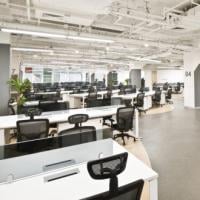The Myths behind Brainstorming, Open Office Plans, and Collaboration

More and more companies are moving to some version of open offices or pod configurations in the hopes of inspiring collaboration and improving productivity. But does it work?
If you ask the vendors who sell these new seats, of course they say yes. There are also anecdotal stories from companies that extol the cost savings and the odd inspiration or connections that arise from mixing employee seating up.
But if you ask the scientists who actually conduct objective, rigorous studies, the answer tends to be no. In fact, reducing privacy and increasing proximity is shown to decrease productivity, and it can even harm employee health.
Nick Perham, a psychologist who studies the effect of sound, has found that office commotion and sound—even music—impairs cognitive performance. A Cornell University study also discovered that employees subjected to the noise in open offices showed increased levels of stress hormones, resulting in less motivation and lower creativity.
Yet getting people together to share ideas—the classic “brainstorming” sessions—generates great ideas, right? Again, the answer seems to be no. A controlled Yale University study showed that groups underperformed solo thinkers by 80 percent. For one thing, introverts, who may be creative but are often uncomfortable speaking up, are less likely to contribute in a group. There are other downsides as well, but in a nutshell, the popular notion of brainstorming as a useful tool for generating ideas is a myth.
The odds are that if you are a software developer or tester, you don’t need a study to tell you that being interrupted or distracted is not helpful. It takes focus and concentration to think through coding or test case design, as well as uninterrupted effort to convert designs into results. Whether the distractions are tangential, such as someone having an unrelated conversation within earshot, or direct, as in someone dropping by your desk to ask a question or spread a rumor, losing your train of thought is costly in terms of efficiency and effectiveness.
So why are companies racing to remodel offices into open designs? Money, plain and simple. You can fit more people into the same space if you remove walls and shrink or lose cubes. But surely this is shortsighted. The majority of companies spend far more on human capital than on office space and furnishings. And inviting less productivity, higher health care costs, and who knows what potential impact from sacrificing creativity and risking mistakes seems like a poor trade-off for chasing this trend.
But maybe there is a way to drive down office costs and still allow employees to enjoy the solitude and silence that engenders high-quality work: It’s called telecommuting. Keep employees out of traffic gridlock, let them enjoy the privacy of their personal workspaces, and use office space for meetings when necessary to share the creativity and ideas that arise from solo thinking.
Developers and testers, disperse!

